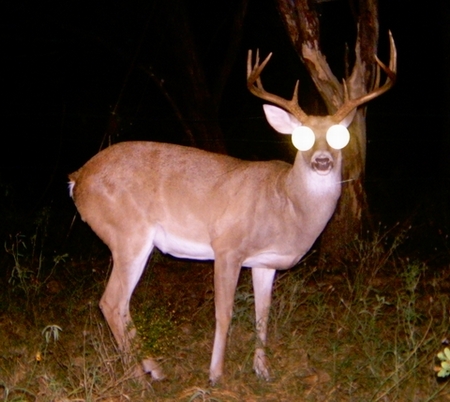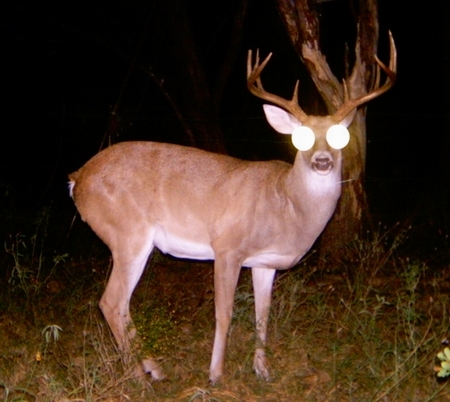The flash of a digital game camera can be an important thing to consider when looking for a new trail camera. The most obvious reason is because deer move most frequently after darkness settles in. The flash of your camera must be strong enough to cover the subject area, but no so strong that it causes “white out” on the pictures. A good starting point would be to research the “effective flash range” as stated by the manufacturer of all the trail cameras in your price range. And remember, these are still “stated” ranges.
If you plan on using the trail camera on the edge of a crop field you will most likely need a longer effective flash range than say 20 feet. On the other hand, if you set up the deer camera over a bait pile in heavy brush, then a short flash range will be all you need. Why? Well first, the solid background of brush will reflect light back into your picture, so the short flash range works fine. And obvious, the deer will be much closer because of the confined space.
Conversely, the distant tree on the other side of the agricultural field will need a much brighter, more effective flash. Regardless of where your trail camera goes, make sre to clear out the area between the camera and where you expect the deer to be. The most obvious reason (coming from a seasoned camera user) is because if the camera is set out during periods of high temperature then even minor moments in brush and weeds in front of the game camera could trigger “false” pictures. This close brush will also cause “flash back,” resulting in “white out” of your night photos as well.
“Flash back” can be spotted on your scouting photos as looks like a very hot spot on the game camera photo that may or may not be bright enough to white out the entire photo. In short, if you have brush, dead limbs, weeds, or other obstructions close to your digital game camera’s flash, cut it down.
And lastly, when purchasing your scouting camera, make sure to research the available cameras to find one that meets your needs. And of course, price varies based on picture size, opitical quality, memory, options, and effective flash range. Do a little scouting before your camera does some scouting and you will get the deer photos you want without the headache.

